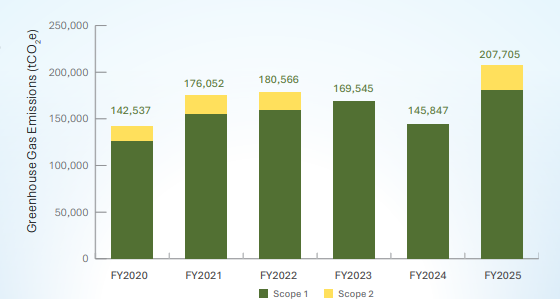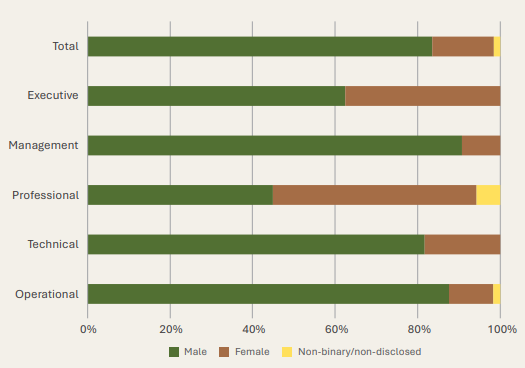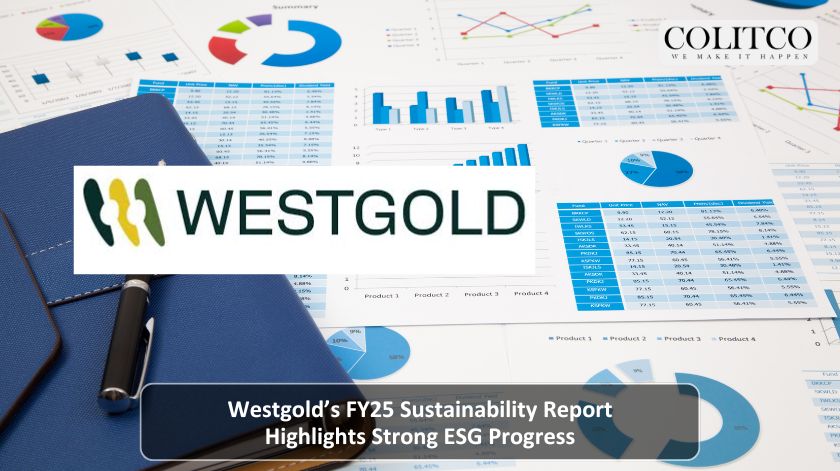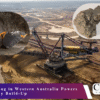Westgold Resources (ASX/TSX: WGX) has published its detailed Westgold Resources sustainability FY25 report, outlining a breakthrough year featuring record gold production, improved safety, and major environmental accomplishments. The Company reported its commitment to increasingly sustainable mining at all its operations in Western Australia.

Figure 1: On-site workforce receiving important operational updates.
A Year of Transformation for Westgold Resources Sustainability FY25
The year FY25 was truly transformative for Westgold’s FY25 performance. On 1 August 2024, the merger with Karora Resources promoted Westgold to the S&P/ASX 200 index in the Company’s largest-ever merger, acquiring the Southern Goldfields.
The valuation of AUD 1.2 billion established a top-five Australian gold producer with a market capitalisation of around AUD 2.5 billion, dual-listed on the ASX and TSX, operating exclusively in Western Australia. For the period ending 30 June 2025, record revenue of AUD 1,360 million was generated, compared to AUD 716 million in FY24. Additionally, record gold production of 326,384 ounces was achieved for the period ending 30 June 2025, up from 227,237 ounces in FY24
Industry Outlook: Australian Gold Sector Resilience
Gold is projected to remain on a solid earnings path in 2025 due to the economic uncertainty prevailing around the world and the cutting-edge soft money policies of the top central banks. Australian gold export earnings have also been enhanced, and it is projected that export earnings can peak at AUD 56 billion in 2025-26. With this favourable market backdrop, Westgold ESG highlights FY25 undertakings and operational expansion plans.

Figure 2: Westgold Resources share price movement over the period.
Safety Improvements Reported in Westgold Resources ESG Report Australia
As per Westgold Resources ESG report Australia, the Company recorded a 37% decrease in Lost Time Injury Frequency Rate from FY24 and a 17% reduction in Total Recordable Injury Frequency Rate. Westgold recorded zero fatalities from health and safety incidents in the period ended 30 June 2025.
Post-merger, Westgold continued to build on the safety standards from Westgold to the newly acquired Southern Goldfields operations. Westgold invested in a new purpose-built training facility at Maddington, a significant investment in the Southern Goldfields, with an underground simulator teaching emergency response control as it trains mining personnel.
A total of 11,216 hours of training facilities were completed at the in-house training facility in the period ending 30 June 2025, highlighting Westgold Resources sustainability FY25 commitment to workforce development.
Environmental Stewardship Achievements
Westgold ESG highlights FY25 demonstrate significant environmental management progress was made in emissions reduction and land rehabilitation.
The Company achieved scope 1 and 2 greenhouse gas emissions intensity, reaching 0.636 tonnes of carbon dioxide equivalent per ounce of gold produced in the period ended 30 June 2025, compared to 0.641 tonnes in FY24.

Figure 3: Annual Scope 1 and Scope 2 emissions reported by Westgold.
In addition, Westgold continued to benefit from gas-solar hybrid generators that had been rolled out across Murchison operations, with these systems achieving over 50,000 tonnes of carbon dioxide emissions savings and generating net savings of AUD 7.1 million in FY25 alone. Renewable electricity on-site output reached 166,710 gigajoules for the period ended 30 June 2025, up from 73,890 GJ in FY24.
Diversity and Community Investment
The proportion of women on Westgold’s Board and Executive Leadership Team reached 38% as at 30 June 2025, up from 26% in FY24. Representation of women and non-binary employees across the workforce increased to 17% as at 30 June 2025.

Figure 4: Workforce diversity at Westgold, segmented by gender and role category.
In FY25, Westgold launched the Respect Hotline, a confidential reporting mechanism for workplace behaviour concerns, illustrating the Company’s commitment to the Westgold Resources ESG report Australia.
Furthermore, Westgold ESG highlights FY25 expanded to substantial community contributions. The Company also spent AUD 2.0 million with Aboriginal and Torres Strait Islander-owned businesses and AUD 174.4 million with local suppliers during the period ended 30 June 2025.
Water Management in Arid Environments
The main source of groundwater for Westgold’s operations is existing mining voids and production bores, authorised by Western Australia’s Rights in Water and Irrigation Act 1914.

Figure 5:Water balance overview showing measurement and movement of water across operational sites.
Total water withdrawal for the period ended 30 June 2025 was 6,390 megalitres. In FY25, a hydrogeologist was hired to complete comprehensive water balance assessments in all operational sites. A significant practice was the need to spread the water-extraction load over multiple bores to reduce pressure on the individual source.
Looking Ahead: Sustained Commitment to ESG
Managing Director and CEO, Wayne Bramwell, and Sustainability Committee Chair, Julius Matthys, reaffirmed that Westgold’s values of Choose Safety, Show Respect and Create Value are its compass. These values continue to inform Westgold’s choices as it works towards the Company’s vision to be Australia’s pre-eminent gold producer.

Figure 6: Managing Director and CEO, Wayne Bramwell.
A major turning point in the sustainability journey was reached at the end of 2024 when the Sustainability Committee approved Westgold’s ESG Framework, which supports growth goals, systems development, strategies for continuous improvement, and the adoption of sustainable practices throughout operations.
Westgold Resources sustainability FY25 report is evidence that responsible mining, safety excellence, and good environmental practices can go hand in hand with strong performance and operational progress.












